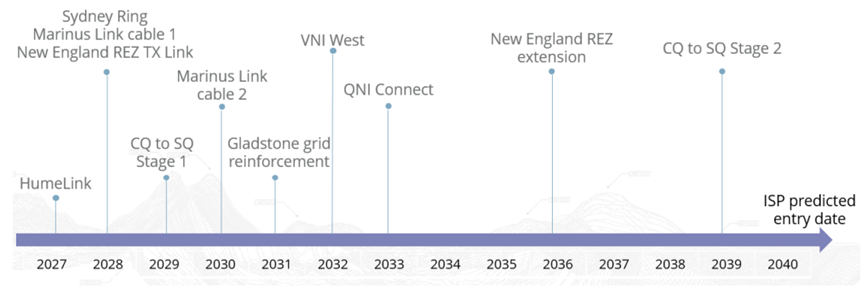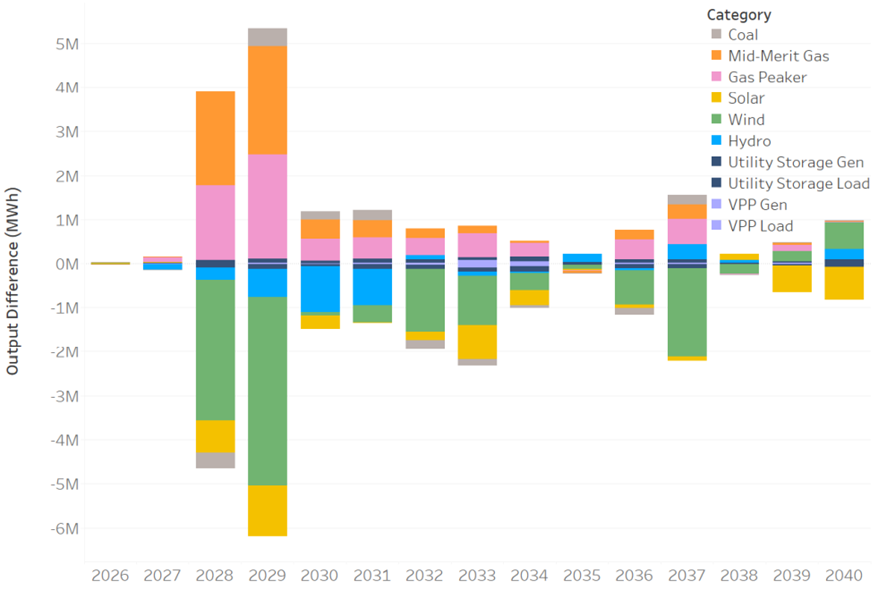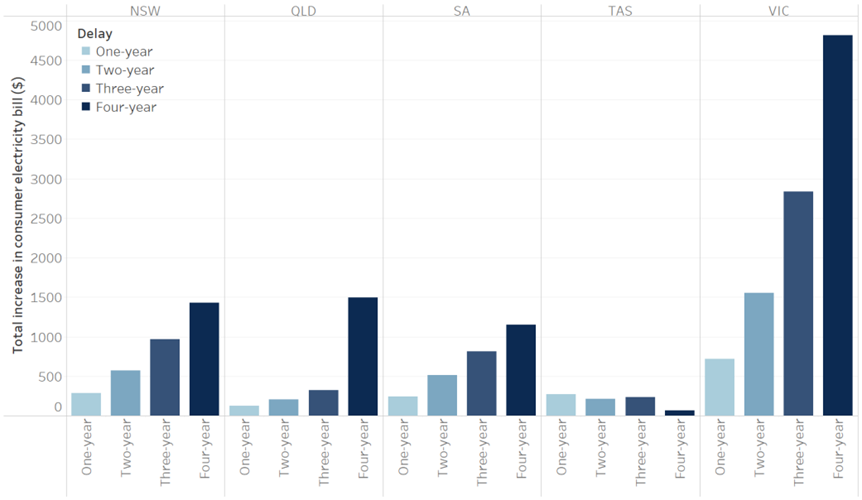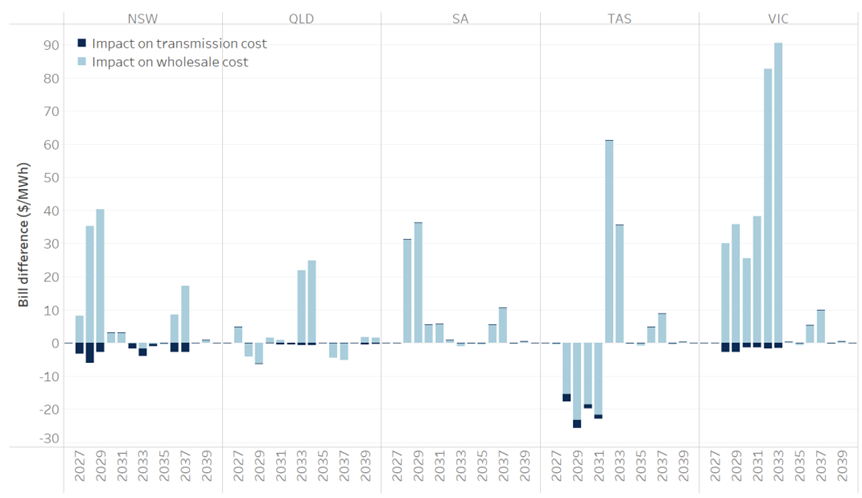What a difference a day can make to energy prices
Recent wholesale electricity market events might have given the impression that the average household will soon be choosing between paying energy bills and putting lettuce on the table. The industry’s collective navel gazing (bellies not oranges) has settled on the view that we need more investment in generation and storage to get us through. To deliver that cheap renewable power to customers and put maximum downward pressure on wholesale prices we need a lot of new transmission and soon. Indeed, New research shows for every day of delay, consumer bills go up over the long-term.
The research by Endgame Economics for NEXA Advisory shows the overall cost of delayed transmission investment is staggering. Endgame modelled wholesale market outcomes for the period 2026-2040 based on long-term fuel costs using the 2022 draft Integrated System Plan’s (ISP) step change scenario forecasts and the entry and exit of generation into the market that we know about as at February 2022.
Modelling was conducted based on one, two, three and four-year delays to the commissioning of the projects that make up the optimal development path in the ISP. Figure 1 shows these transmission projects and their expected timing.
Figure 1 – Draft 2022 ISP optimal development path timeline
The key impact of delayed transmission investment is when different technologies are dispatched in the wholesale market. Transmission removes the constraints on the dispatch of renewables and enables the connection of new renewables and batteries. The longer transmission is delayed, the more coal and gas are required to meet bulk energy and reliability requirements. Figure 2 shows the NEM-wide generation mix impact of a two-year delay to transmission investment. The impact peaks at a net reduction in wind, solar and storage output of just over six million MWh in 2029.
Figure 2 – Generation mix impact of a two-year delay to the Draft 2022 ISP optimal development path
Delays clearly impact both consumer prices and emissions. While the emissions story is a very important one, the Endgame analysis (and therefore this note) focusses on price outcomes – and the results are staggering. A one-year delay in transmission investment would increase a residential consumer’s bill by an average of $327 over the period 2026-40. A four-year delay would increase the same bills by an average of $1,791. For every day that the ISP optimal development path is delayed, residential consumer bills go up by around $1 to $2 in 2022 real value.
Zooming back out to the bigger picture – a four-year delay to transmission investment would add just over $82.5 billion to residential and business power bills over the long-term across the NEM.[1] A one year delay –$12.5 billion.
One of the most surprising takeaways from the analysis is how much the impact differs across NEM regions. The impact in Tasmania is almost negligible, while the impact in Victoria is more than double the next most impacted region. Figure 3 shows the asymmetric impact across NEM regions.
Figure 3 – total impact of transmission delays on residential consumer bills from 2026-40 (real $2022, incl GST)
Delayed transmission investment means the costs of it hit consumer bills later. While this reduces the transmission costs on consumer bills (only a relatively small part of the bill stack), the reductions are dwarfed by increased wholesale costs. This is shown most clearly in Figure 4.
Figure 4 – change in wholesale and transmission cost ($/WMh, real $2022) from a two-year delay in transmission investment
This analysis helps bring perspective to the balance between rigor and timeliness that the Australian Energy Market Commission is looking at in the planning and investment processes that underpin major transmission investment in the NEM.
It highlights the very significant benefits to customers from timely transmission investment and the need to ensure the regulatory frameworks and policy settings are fit to enable this.
[1] These aggregate figures are not in the Endgame report but were provided directly by the authors.







